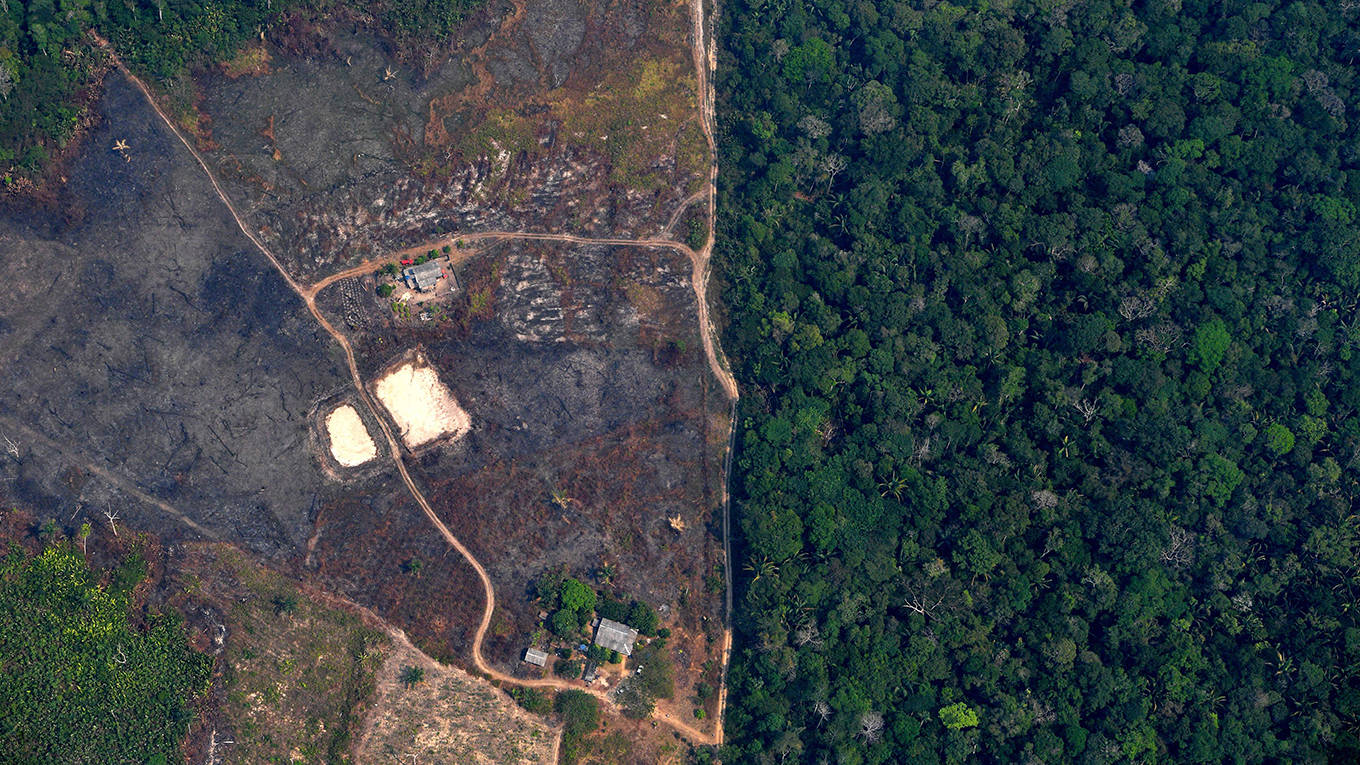MAUREEN SANTOS, LINDA SCHNEIDER

RIO DE JANEIRO/BERLIN – It may seem as if the world is finally taking the climate crisis seriously, judging by the number of pledges to reach “net-zero emissions.” Among the major emitters, both the United States and the European Union have promised to achieve this goal by 2050, while China intends to become carbon-neutral before 2060. Even oil giants Shell and BP plan to reach net-zero emissions by mid-century.
Large tech corporations appear more ambitious still. Amazon has committed to reaching net-zero carbon dioxide emissions by 2040. Microsoft has pledged to be “carbon negative” by 2030, and by 2050 it aims to have removed from the air all the CO2 the firm has emitted since it was founded in 1975. Google claims to have been carbon neutral since 2007, and aims to be “carbon free” by 2030. In fact, net-zero pledges have come from all parts of the economy, including the meat and dairy industry, aviation, mining, finance, and retail.
But these seemingly ambitious goals in fact amount to yet another round of greenwashing and dangerous distractions that will delay and prevent the adoption of real climate solutions. That is because net zero is not really zero.
For starters, 2050 is almost three decades away. Making long-term net-zero pledges enables governments and businesses to avoid drastic emissions cuts now. From a climate-justice perspective in particular, mid-century is way too late. Wealthy, industrialized countries in the Global North, due to their historical emissions and current levels of wealth, have a responsibility to decarbonize much faster.
Compounding the problem, many net-zero plans are not backed up by corresponding short-term and interim emissions-reductions targets, such as for 2025. Instead, the majority of countries’ nationally determined contributions under the 2015 Paris climate agreement, which were recently updated or reviewed, are based on a 2030 timeframe. This disregards the five-year review cycle at the heart of the Paris accord.
Worse still, the inclusion of “net” in climate pledges confirms that emissions will not actually decline to zero. Instead, they will supposedly be offset – to an unclear and disputable extent – by removal of CO2 from the atmosphere.
Many such net-zero schemes rely excessively on natural ecosystems to remove and store atmospheric CO2. This has sparked the current hype surrounding so-called nature-based solutions. While carefully restoring natural ecosystems is crucial in addressing both the climate and the biodiversity crises, it must not serve to prolong the lifetime of polluting industries. But nature-based solutions also include proposals that would transform agriculture into a large-scale emissions-mitigation opportunity associated with the soil carbon market.
Net-zero plans often also rely on speculative techno-fixes to remove CO2 from the atmosphere. Climate-geoengineering technologies such as bioenergy with carbon capture and storage (BECCS) or direct air capture (DAC) are highly risky and unproven – in particular at climate-relevant scales – and could have potentially devastating consequences for people and ecosystems. Either way, “solutions” like BECCS and DAC risk locking in several more decades of continued fossil-fuel production and combustion.
The conversation instead needs to return to the real climate solutions that currently do not feature at high-level intergovernmental conferences. The debate should center on a comprehensive and long-overdue transformation of our exploitative and destructive economic systems. Bringing down global greenhouse-gas (GHG) emissions to real zero requires addressing the manifold global and historical injustices that caused the climate crisis and continue to shape it.
Specifically, the rights, lives, and livelihoods of indigenous peoples and local communities must be at the core of any climate solution. That means listening to these groups, and taking their practices and proposals seriously. Strengthening and securing their land rights is one of the most effective ways to protect ecosystems, biodiversity, and the climate.
In addition, we need to leave fossil fuels in the ground right now. There must be no further development of these resources, and existing fossil-fuel infrastructure must be phased out as soon as possible, based on a just transition for workers and communities that depend on them.
Moving away from industrial agriculture is another high priority. Over-intensive, destructive production has exhausted the Earth’s soils and ecosystems and is generating massive amounts of GHG emissions, while feeding only a fraction of the world’s population. It is a major driver of deforestation, and the resulting destruction of ecological barriers and buffers probably contributed to the outbreak of the COVID-19 pandemic.
By contrast, agroecology offers new possibilities for socio-ecological transformation and can contribute to tackling climate change in a safe way. This approach can also help to guarantee food and nutrition security and sovereignty, and conserve biodiversity.
The Global North’s overconsumption and the profit-driven exploitation of the world’s resources need to stop. Instead, we must align economic activities with the goals of global social and climate justice, thereby putting well-being and care at the center of our efforts to protect our shared environment.
Recent net-zero pledges may seem ambitious, but they only promote a new set of false solutions under a guise of 50 shades of green. Governments and businesses must abandon their greenwashing strategies once and for all. At this crucial moment, we need real political will to create real change.
No comments:
Post a Comment